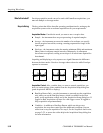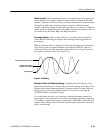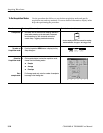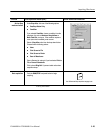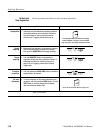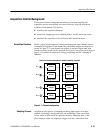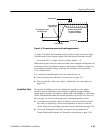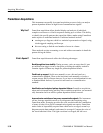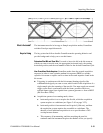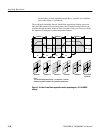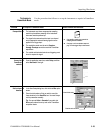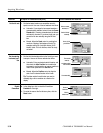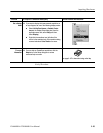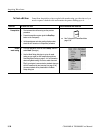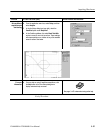
Acquiring Waveforms
3-30
CSA8000B & TDS8000B User Manual
FrameScan Acquisitions
This instrument can modify its normal acquisition process to help you analyze
pattern-dependent failures in high bit-rate communications signals.
FrameScan acquisitions allow detailed display and analysis of individual,
complete waveforms or of the bit sequences leading up to a failure. This ability
to identify the specific patterns that caused the failures makes using FrameScan
mode superior to traditional methods. Traditional methods include:
H creating an eye diagram, which is a statistical representation of signal, using
clock-triggered sampling oscilloscope.
H bit-error testing to find the total number of errors in a frame.
These methods are time consuming to use and neither can examine in detail the
pattern driving the failure.
FrameScan acquisition mode offers the following advantages.
Breakthrough time base stability. Timing accuracy varies no more than 0.1 part
per million from trigger event to data point, providing the stability needed to
examine signals of almost any length for pattern-dependent failures.
Flexible set-up support. Set bit rates manually or set a bit rate based on a
communication standard. Then set the horizontal scale manually or invoke a
custom autoset: Bit/Eye-Pattern Autoset, if you have set an independent bit rate,
or Standard-Mask Autoset, if you set bit rate based on a communication
standard.
Identification and analysis of pattern-dependent failures. FrameScan acquisition,
when used with mask testing and S top After condition acquisition, can automati-
cally determine the bit at which a pattern-dependent failure occurred.
Improved noise resolution on low-power communication signals. The instrument
can use Average acquisition mode on Eye diagrams when acquiring using
FrameScan mode. Averaging provides the noise resolution that the examination
of many of today’s low-power communication signals can require. FrameScan
mode results in sequentially acquired data which can be averaged; normal eye
diagrams acquire data randomly and cannot be averaged. Compare the noise of
the waveforms that follow. The right waveform is averaged; the left is not.
Why Use?
What’s Special?



